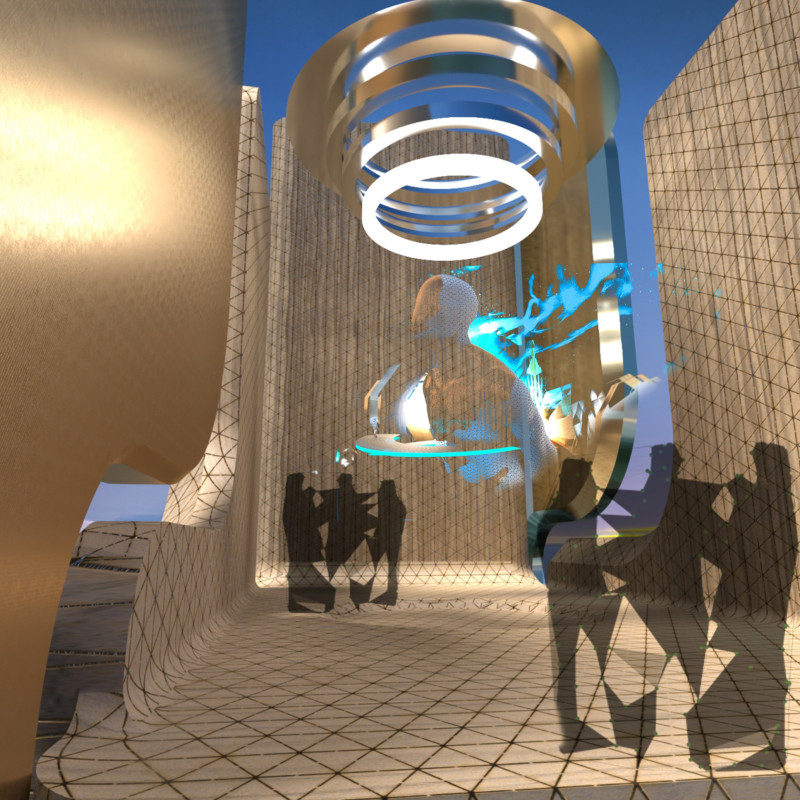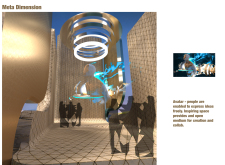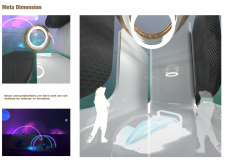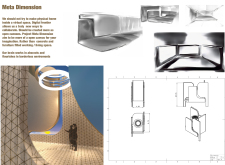5 key facts about this project
The project "Meta Dimension" is an architectural design that redefines collaborative spaces through an innovative integration of digital and physical environments. This project serves as a flexible platform for creativity, encouraging activities centered on interaction and expression. By offering a unique approach to space utilization, "Meta Dimension" accommodates a variety of functions, including workshops, exhibitions, and community gatherings.
Fluidity Characterized by Dynamic Design
At the core of "Meta Dimension" is a focus on flexible spatial configurations that promote adaptability. The absence of conventional walls enables an open design that allows users to define their experiences based on personal or collaborative needs. The project employs rounded structural forms that facilitate movement and interaction, creating an inviting atmosphere. The design emphasizes an organic flow within the space, encouraging visitors to explore freely and engage with their surroundings.
One of the notable features of "Meta Dimension" is its innovative use of materials. Reflective metals, such as stainless steel, are integrated into key structural components, amplifying ambient light and enhancing the visual aesthetics of the interior. Textured wall panels, including composite boards and glass, provide tactile contrast and enrich user interaction. The incorporation of projection elements utilizes materials like polyethylene or acrylic to create dynamic visual displays, bridging the gap between the physical space and digital content.
Exploration of Psychological Engagement
"Meta Dimension" also focuses on psychological engagement through its design approach. By creating a space that blurs the line between digital and physical realities, it facilitates connections among users. The architectural layout encourages communal interaction while prioritizing individual creativity. Projections and visual stimuli are strategically placed to inspire users, leading to a heightened sense of presence and collaboration.
The project's ability to foster an environment conducive to creativity sets it apart from conventional architectural designs. The emphasis on flexibility, coupled with an immersive and interactive sense of space, caters to the modern needs of diverse user groups.
Visitors are encouraged to explore the detailed architectural plans, sections, and other design elements of "Meta Dimension" to gain a deeper understanding of its innovative approach and unique architectural ideas. By examining these aspects, one can appreciate how this design not only reinterprets conventional space but also engages users in a meaningful, interactive experience.


























